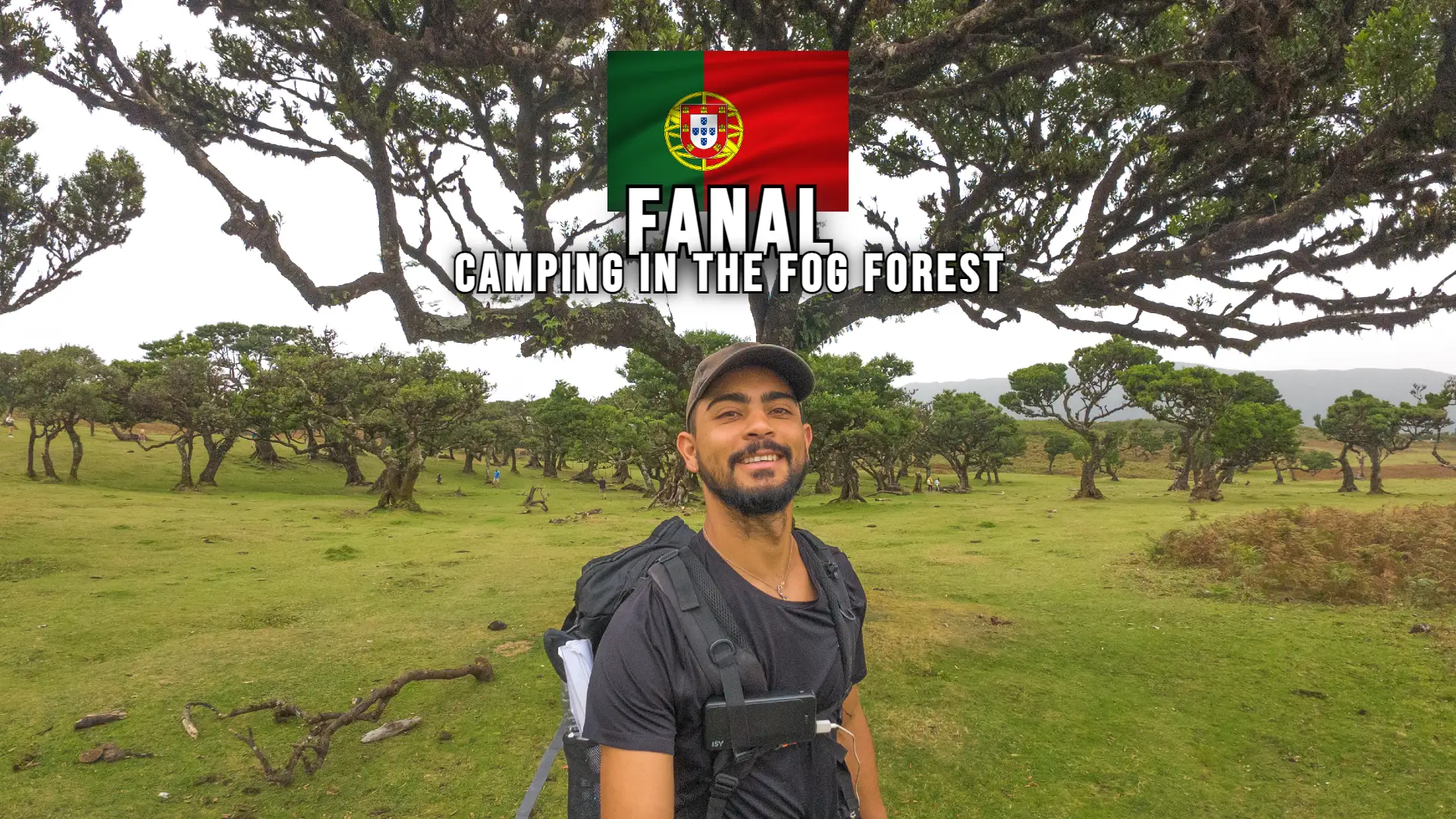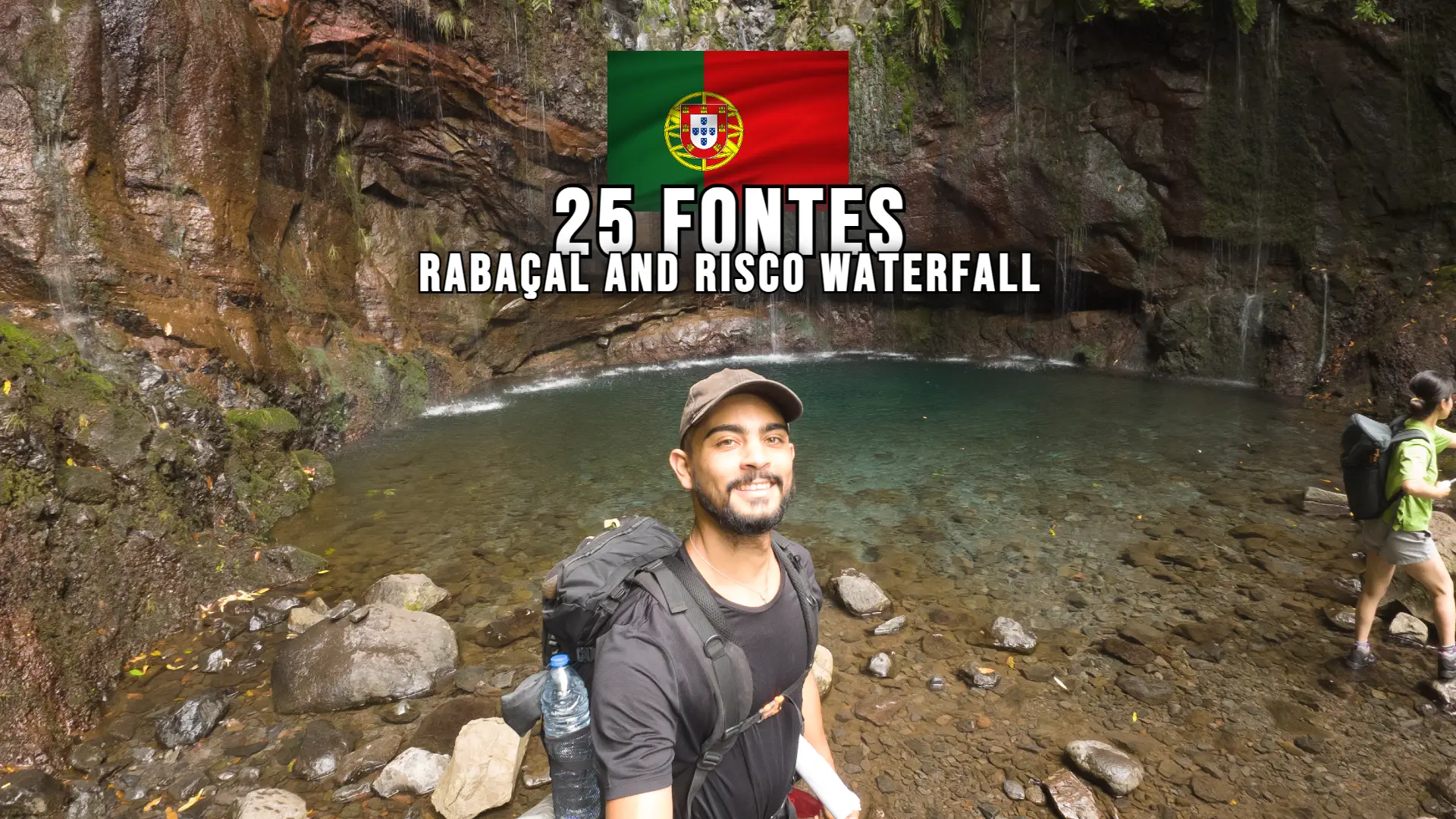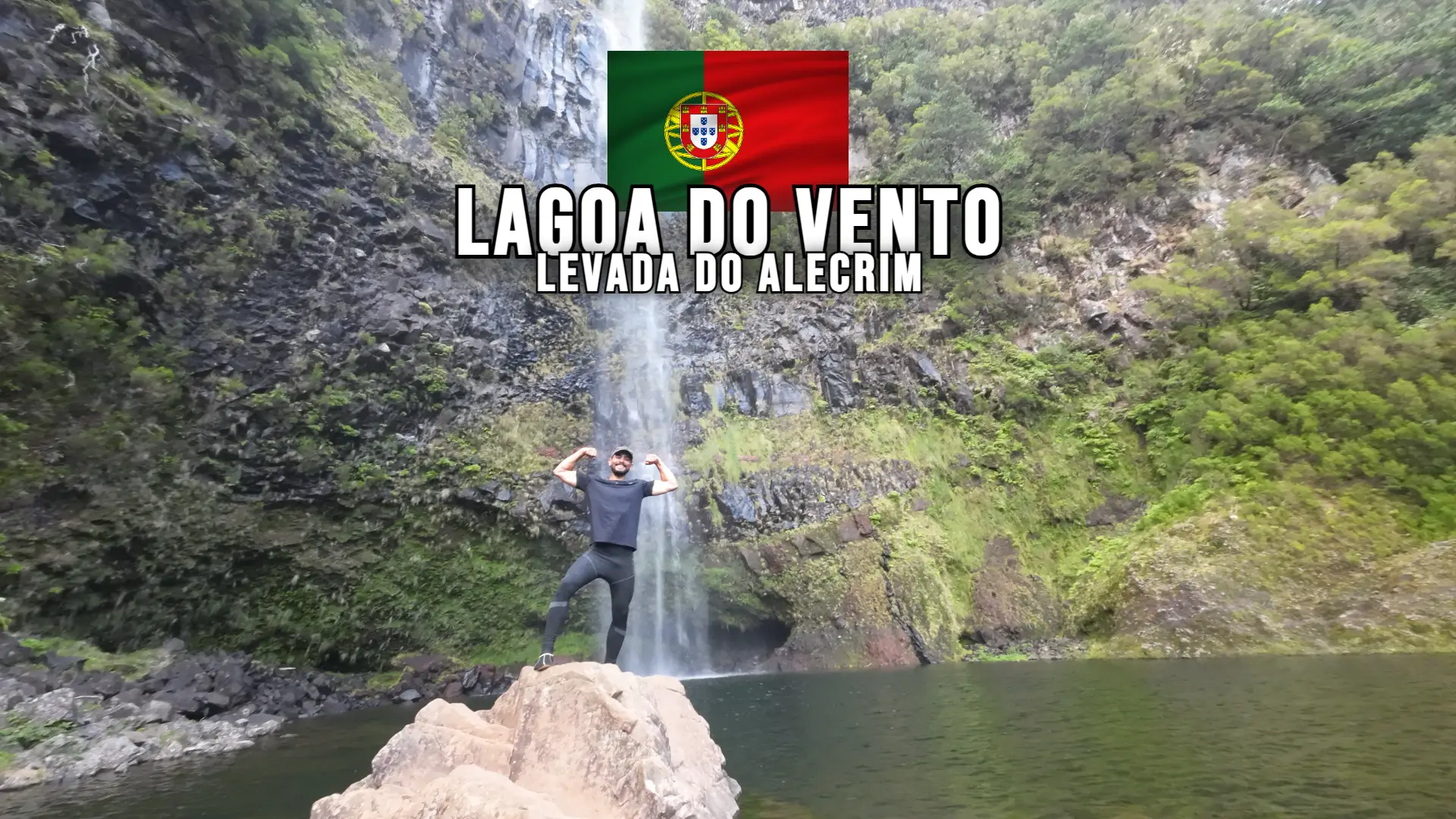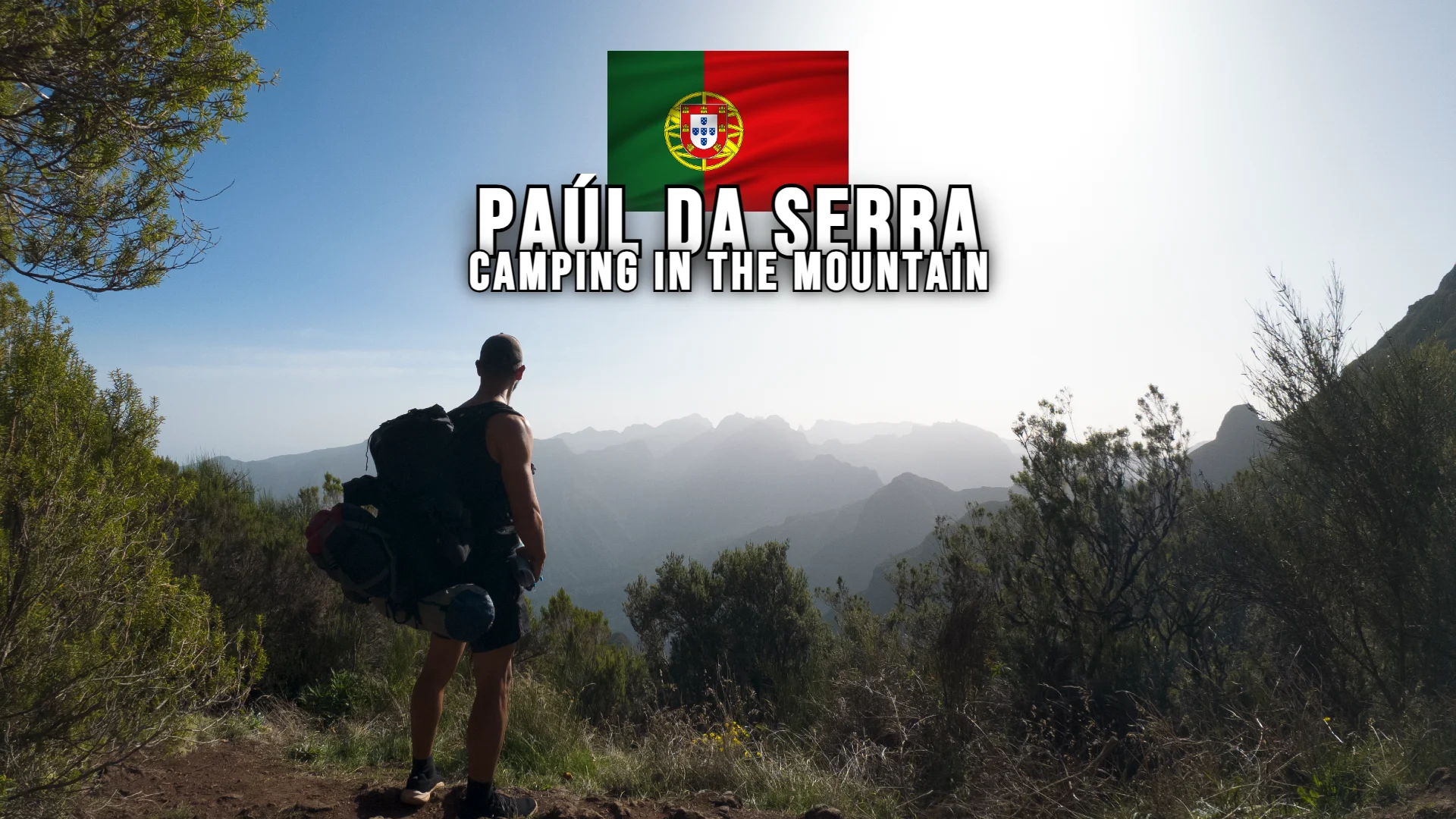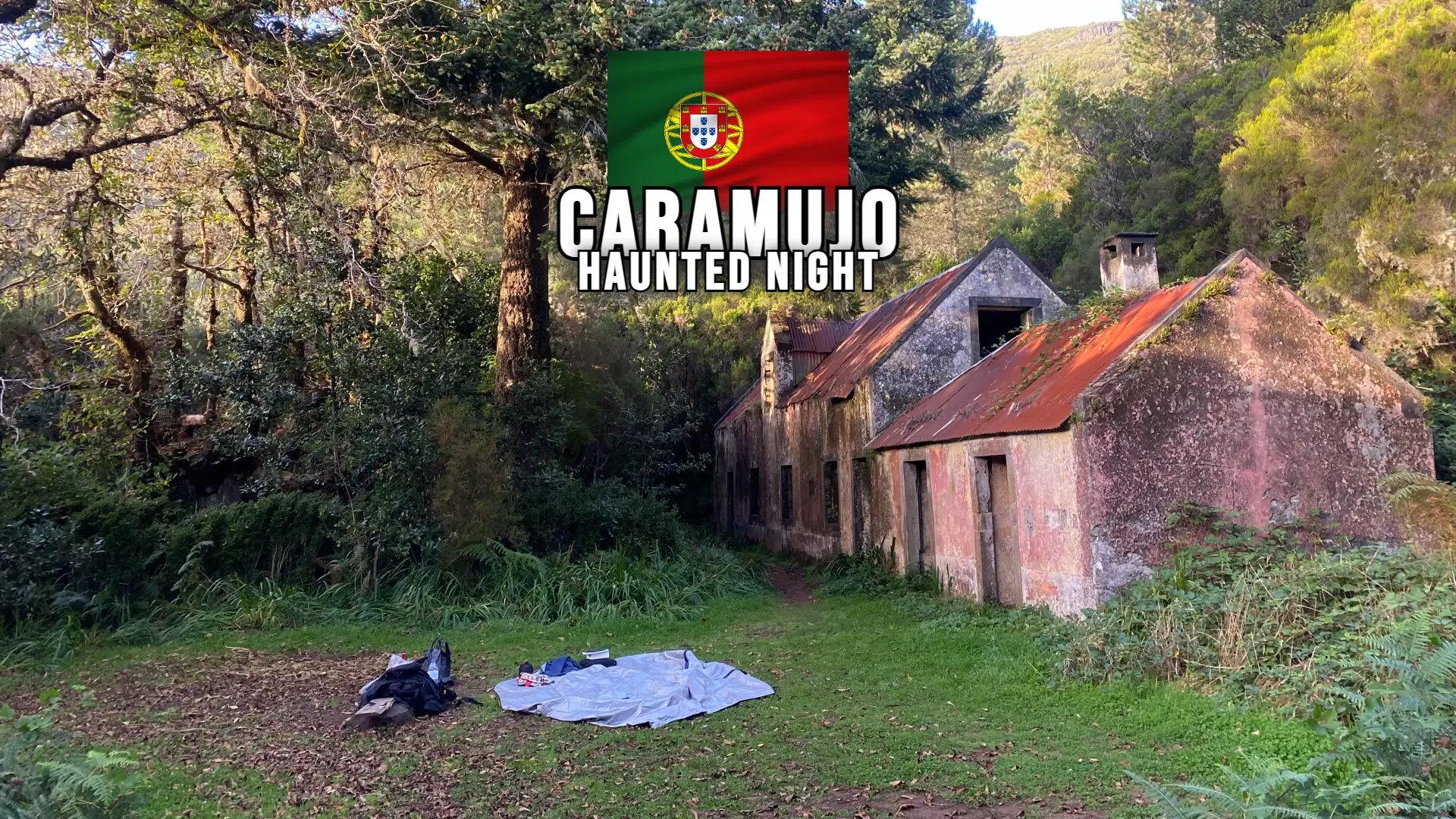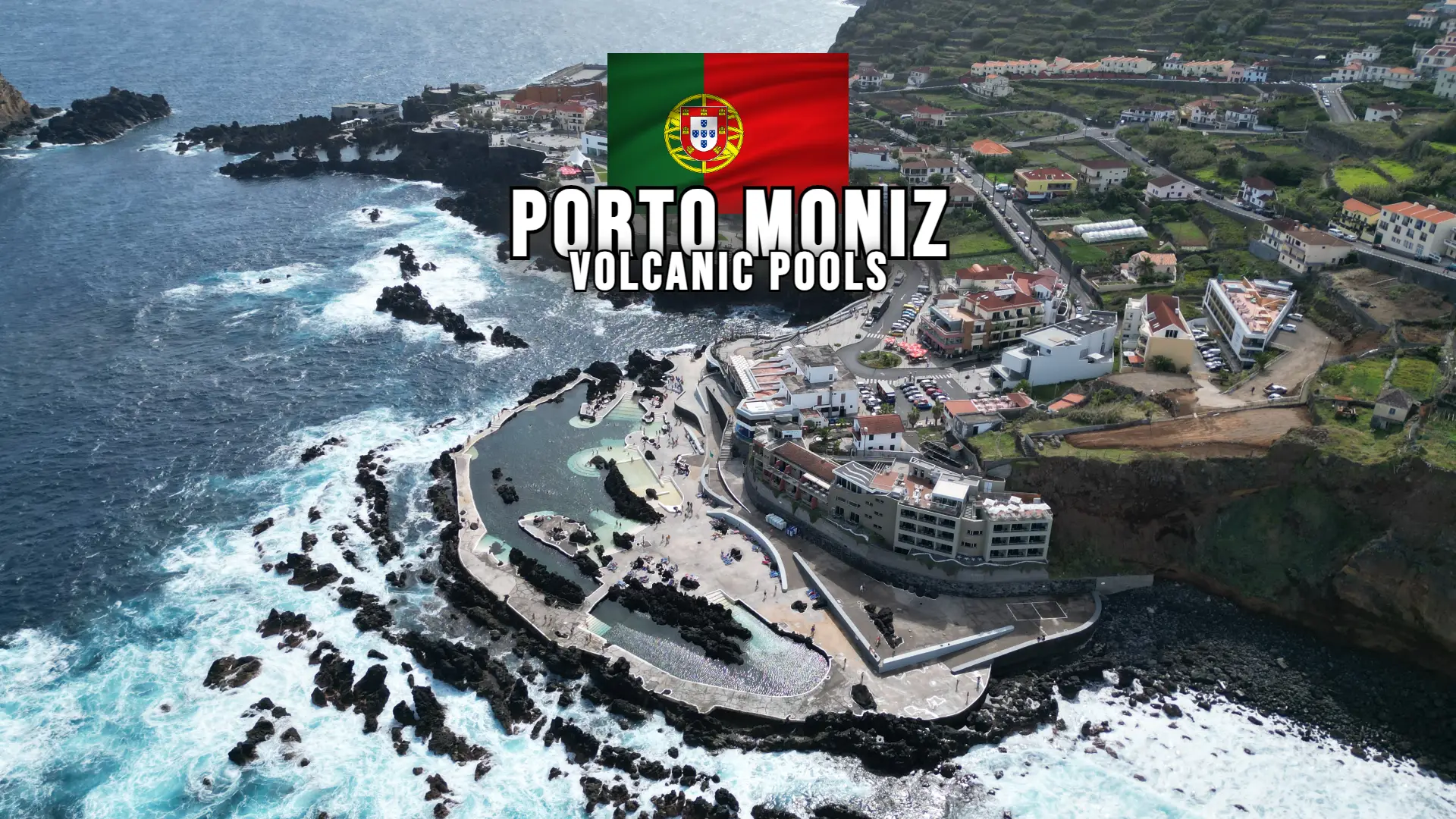With narrow cobbled streets and old houses, many tourist attractions where the first settlement occurred and the first village was born, we have the charming and charming Funchal, the Old Town and capital of Madeira Island.
Welcome to Funchal, the vibrant capital of Portugal’s Autonomous Region of Madeira, and one of Portugal’s main tourist attractions. Located on the southern coast of Madeira Island, Funchal is a city of incredible natural beauty and rich cultural heritage. With a population of over 105,795 people, it is the sixth largest city in Portugal.
The city of Funchal is a unique blend of history, culture, and nature. It is home to many historical sites and museums, such as the 15th-century Sé Cathedral and the Museum of Contemporary Art. If you are a history buff, you will definitely enjoy exploring the city’s many historical landmarks and monuments.
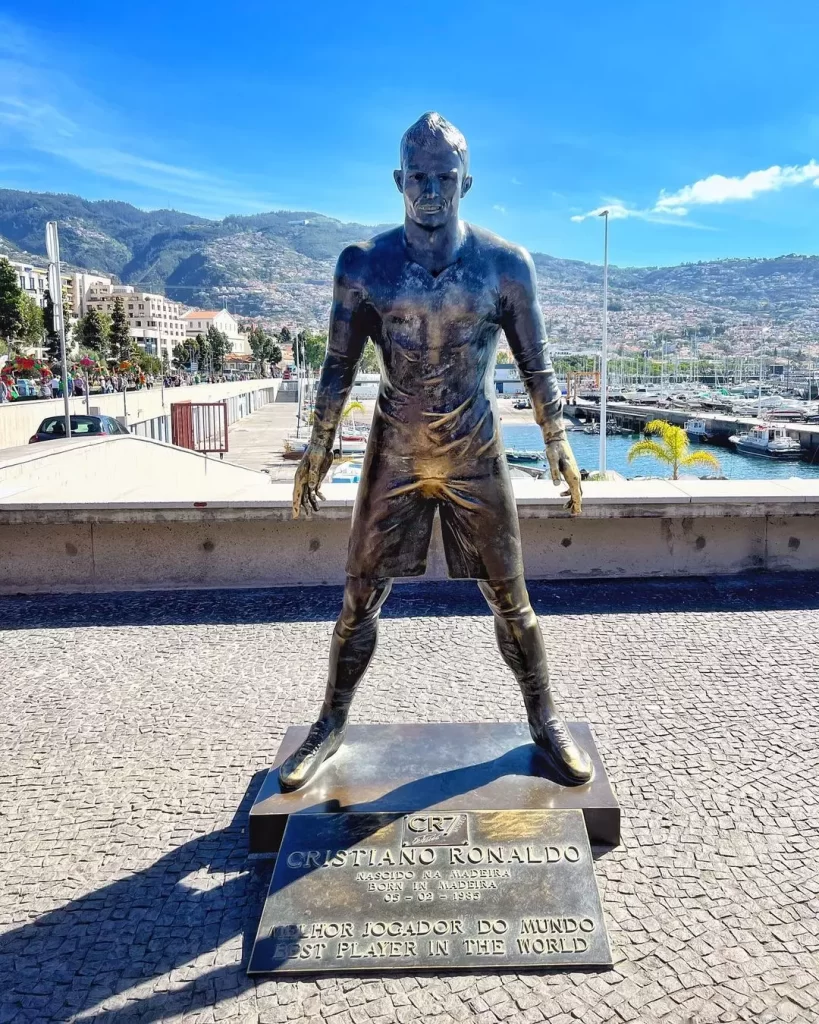
Funchal is also a nature lover’s paradise. The city is surrounded by stunning mountains and is known for its lush gardens and parks. One of the most popular attractions in Funchal is the Monte Palace Tropical Garden, which features a wide variety of exotic plants and flowers or the Madeira Botanical Garden, if you want to get closer to nature, you can take a cable car ride up to Monte, which offers breathtaking views of the city and the surrounding landscape. However, to better understand the architectural richness of the Old Town it is necessary to visit the Old Town of Funchal and its charming features.
The places we’ve listed are:
- Cabo Girão Cliff
- Jesuits College of Funchal
- Monte Palace Tropical Garden in Funchal
- Porto Moniz Volcanic Pools
- São Vicente
The best of the Old Town of Funchal
The Old Town of Funchal is a place filled with local culture and this is noticeable in everything the old town has to offer:
- Little shops
- Arts
- Gastronomy
- Architecture
Arts in the Old Town
The street of Santa Maria in the Zona Velha, one of the oldest in the region, is filled with paintings all along it. There are damsels, fishermen, florists, mermaids, among others depicted on the walls and windows of the houses.
At the beginning of the Zona Velha there is a large painting by Cristiana Souza, Hugo Brazão and Rodolfo Britto about Madeira, with bananas and other objects representing the island. Some paintings have reliefs that make even more evident the well done work and the details of the artwork, some are creative like a mermaid on her back sitting on a bench, the bench is a post office door and the tied up hair pulp is a bell, for knocking.
But the most beautiful arts are those of the project “Arts with open doors”, where several doors of restaurants, houses and shops have some kind of painting.
Gastronomy of Funchal
Madeira has many typical dishes and in the Old Town there are many restaurants offering delicious traditional dishes. As it is an area with a lot of fishing, there is a great variety of fish species that are made. Another dish with local specialties is Swordfish with banana and passion fruit sauce.
Some recommended restaurants in the Old Quarter are Santa Maria and Jango. But the restaurants in the area are incredible.
Architecture of funchal
The architecture of the Old Town is the main attraction of the place. The houses, streets and some buildings in the area are great examples of historical architecture that are highly respected by locals and visitors alike, as well as being beautiful.
Some examples of architecture to see in the Zona Velha are the Capela do Corpo Santo and the Fortaleza de São Thiago, two very well-preserved buildings.
- Chapel of Corpo Santo
The Chapel was built by fishermen in the late 15th century and its Gothic style door is still the original one from hundreds of years ago.
Nearby there is also a restaurant with live music.
- Fortress of St. James
The 1614 Fort, in turn, was built in order to protect the city from attacks from ships. In the open area of the Fort, antique cars are on display for visitors.
It is possible to enter the fort and see the ancient architecture of the walls, structures and finishes. A cool curiosity is that until 1992 the Fortress had military purposes, but later it was given by the regional government and became a Museum of Contemporary Art.
Cabo Girão Cliff
If you’re looking for an exhilarating experience and breathtaking views in Madeira, look no further than the Cabo Girão cliffs. These towering cliffs boast a nearly vertical drop of 586 meters down to the Atlantic Ocean, and at the top lies a glass-floored skywalk that extends out over the edge. Walking on this skywalk will give you an illusion of walking in the air and a stunning 586m downward view of the ocean.
Miradouro Cabo Girão
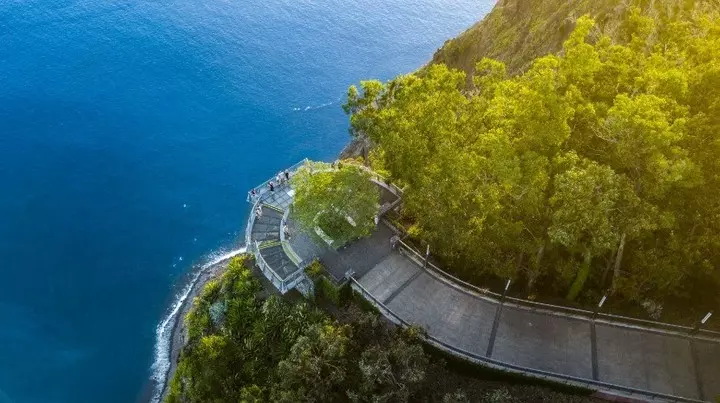
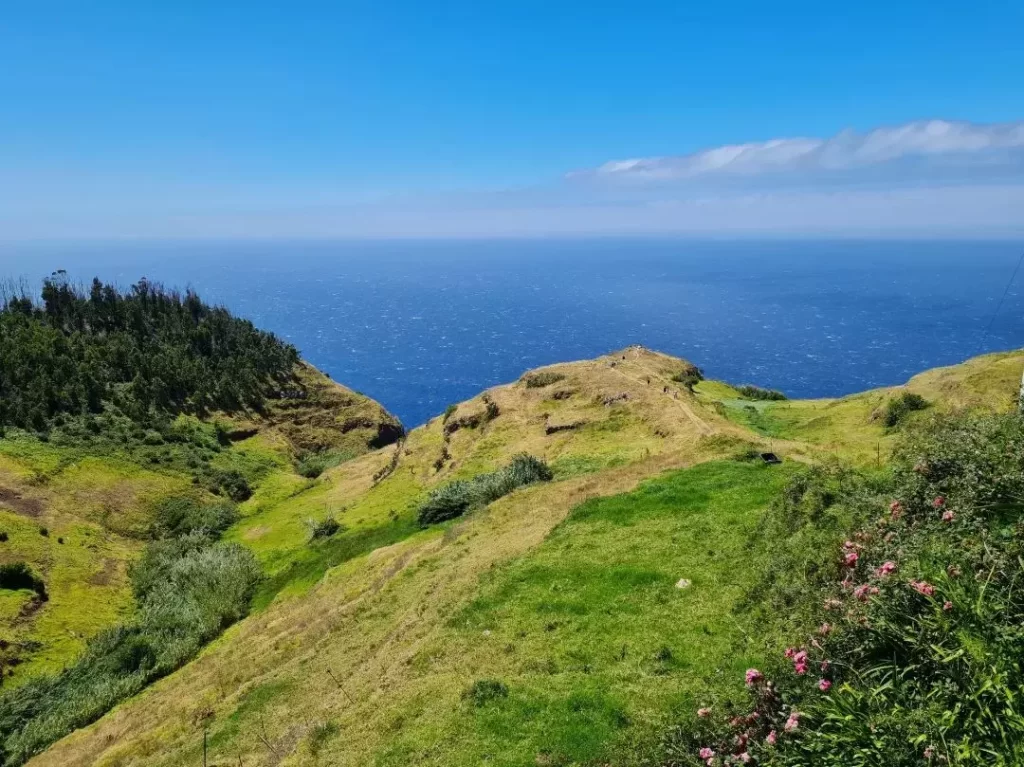
However, if you’re not up for the thrill of walking on a glass-floored skywalk, the Cabo Girão cliffs still offer a spectacular viewpoint. Known as the Miradouro Cabo Girão, it provides magnificent views along the entire southeastern coastline of Madeira. The beach and terrace fields at the base of the cliffs are accessible via the Teleferico do Rancho cable car. However, the cable car station is a 4km drive from the viewpoint.
Cabo Girão Skywalk
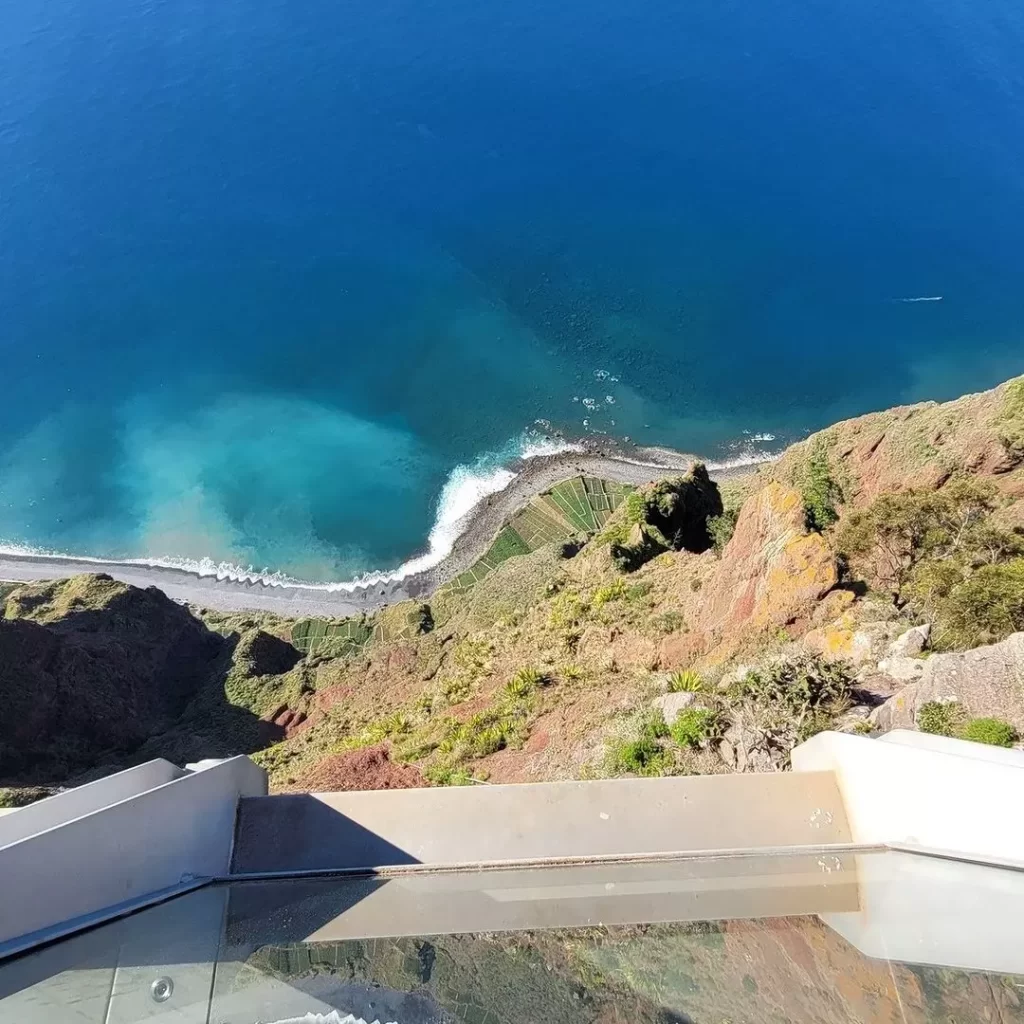
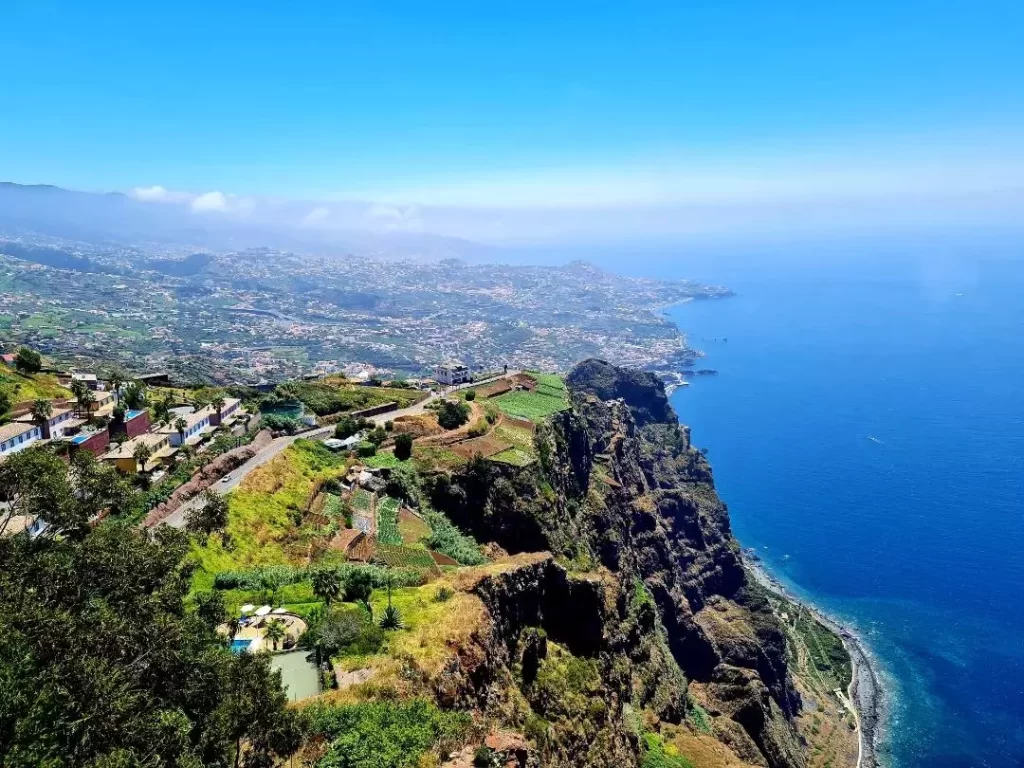
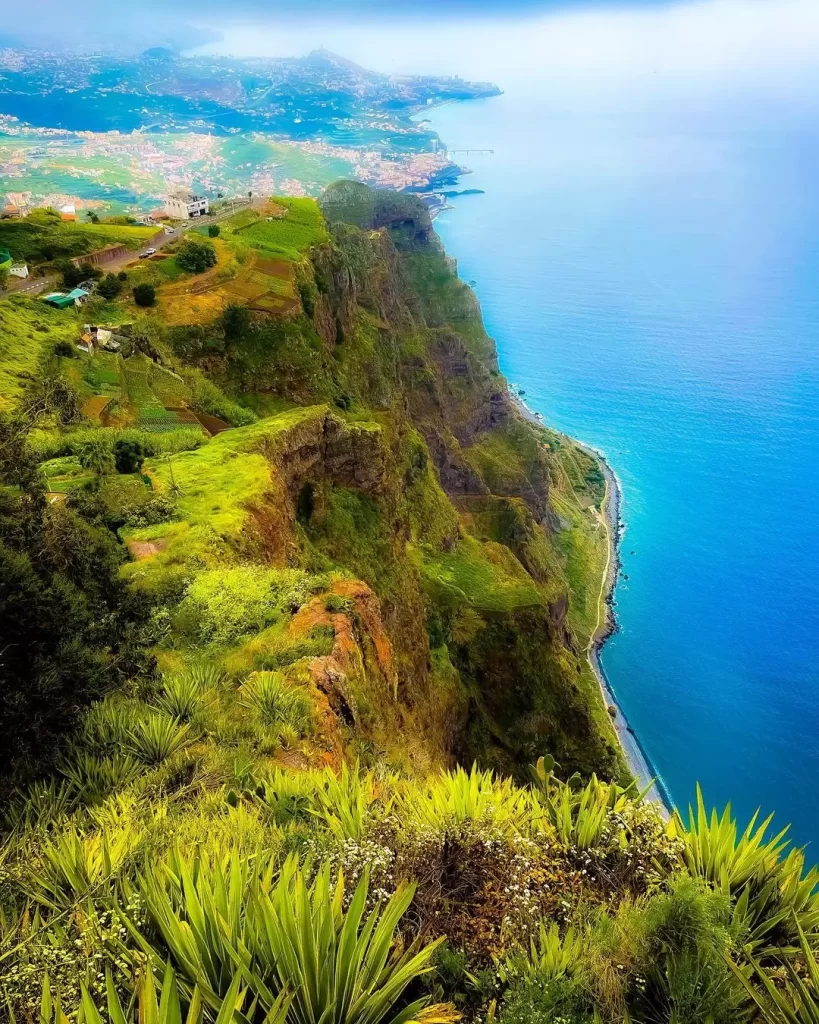
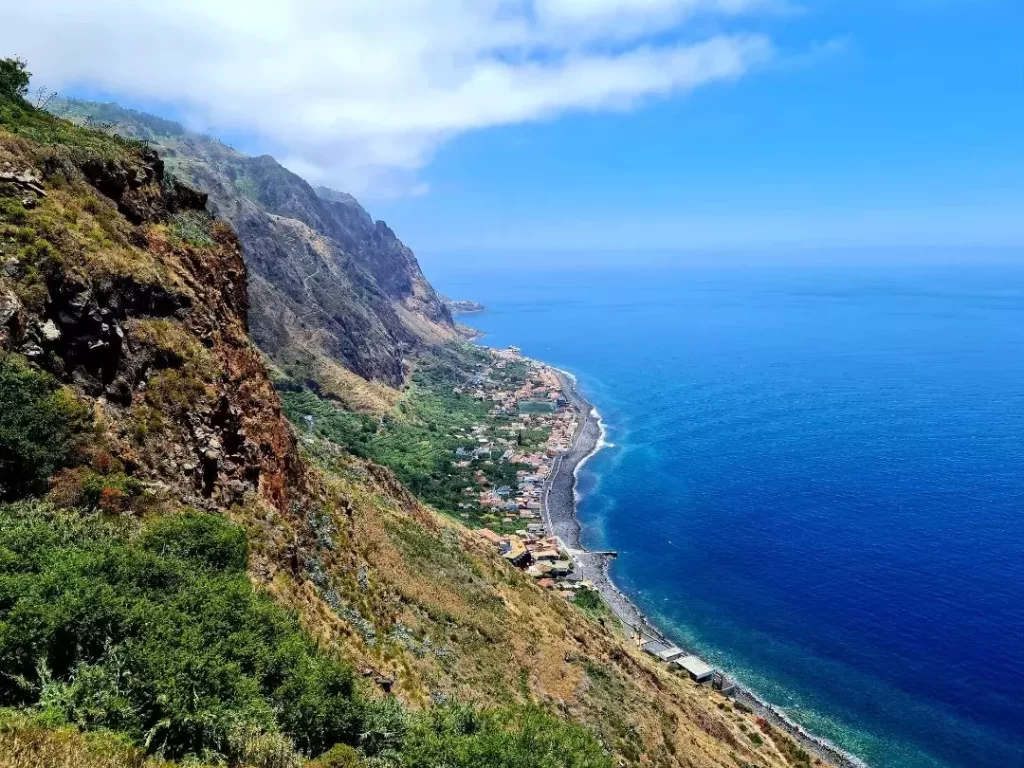
Cabo Girão is the highest sea cliff in Europe with the glass floor skywalk. The Cabo Girão skywalk is a well-run tourist attraction with ample parking, modern facilities, and enthusiastic staff. It’s open every day between 08:30-20:00 (summer) or 08:30-19:00 (winter), and there’s presently no admission fee. However, there may be an admission fee when you visit, as a fee of €0.50 was charged during the peak season of last year.
While the skywalk is perfectly safe, the glass bottom floor may induce minor vertigo in most sane people. Keep in mind that the Skywalk has become Madeira’s most popular tourist attraction, so it can be very busy between 10:00 and 14:00 during the peak season when coach tours arrive. If you want to avoid the crowds, we recommend visiting either early in the day or later in the evening.
At the site, there’s a large café, two souvenir shops, and paid public toilets (€0.50). There’s also a large free car park, but it quickly fills up when the tour buses arrive. If you have your own transport, try to avoid the peak times. If you’re part of an organized tour, expect to spend 20-30 minutes here, which is sufficient to walk over the Skywalk, scare yourself, and take a few photos.
Once you’ve seen the viewpoint and walked over the Skywalk, there’s not much else to do at Cabo Girão, so typical visits only tend to be 15-30 minutes. However, you could extend your visit by riding the Teleferico do Rancho to the base of the cliff. But keep in mind that it’s not within walking distance of the viewpoint and is an 8-minute drive down the hill.
If you don’t have a rental car, there are bus services from Funchal or Câmara de Lobos. The most useful bus route is the number 7 service operated by Rodoeste, which connects Funchal to Ribeira Brava and stops in Câmara de Lobos and Cabo Girão. The latest timetable can be seen on their website.
Fajas de Cabo Girão
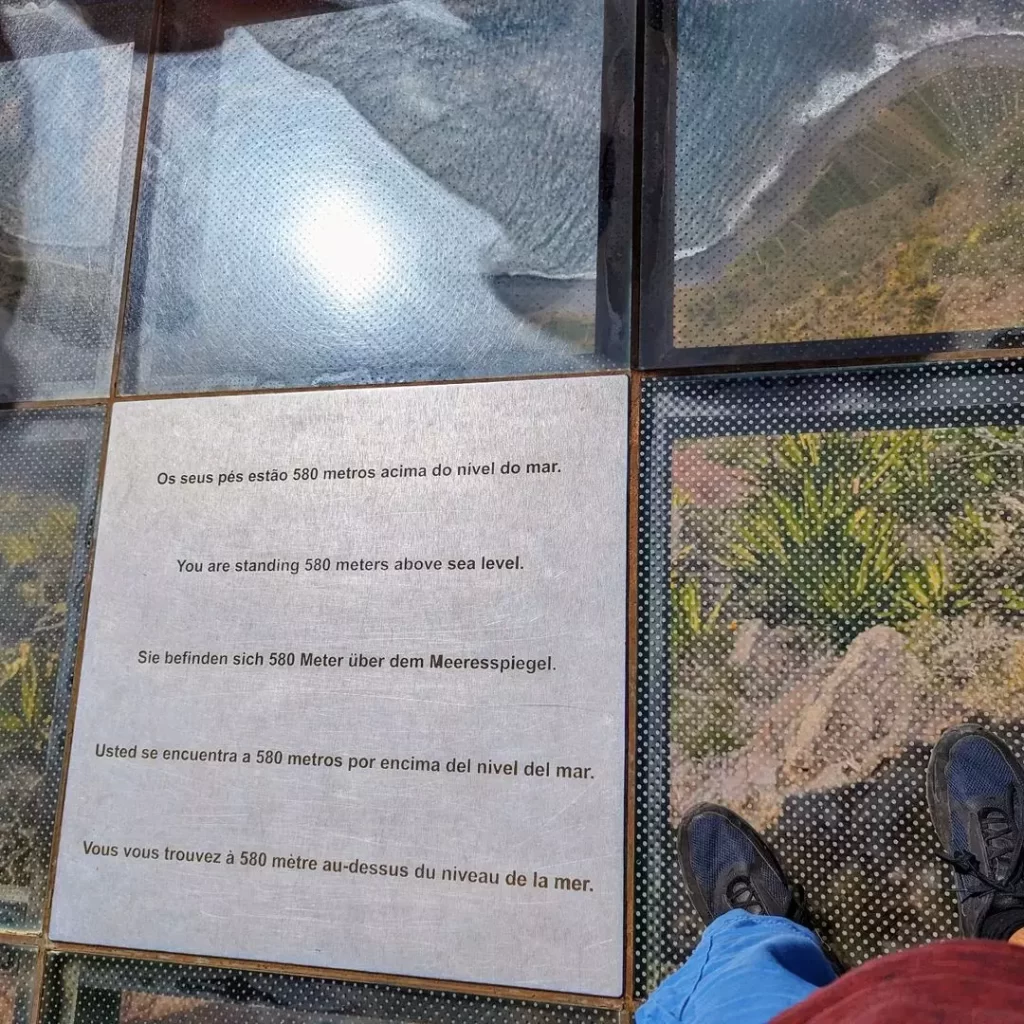
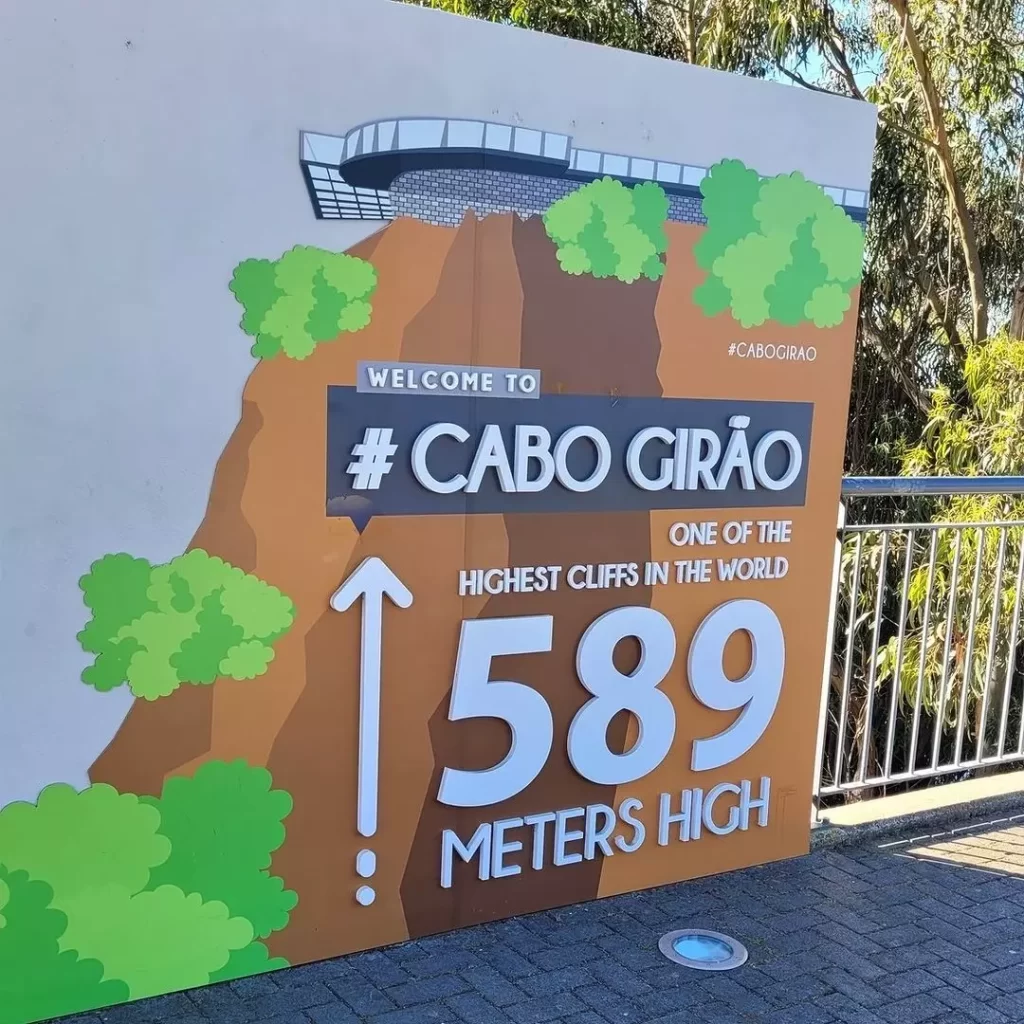
The Fajas de Cabo Girao are the terraced fields that lie directly below the Cabo Girão cliffs. These fields traditionally cultivated vineyards, as the cliffs provided both shelter and favourable growing conditions. The Fajas de Cabo Girao were only accessible by boat until the construction of the Teleferico do Rancho in 2003.
If you’re interested in exploring the Fajas de Cabo Girao, a return ride on the Teleferico do Rancho costs €5.00, and the dramatic route descends down the side of the cliff. However, at the base, there’s not much to see apart from a stony beach and a couple of coastal foot
Jesuits College of Funchal
Have you ever heard of the Funchal’s Jesuits College? Located in the heart of Funchal on the Town Hall Square, this historical building is one of the most emblematic landmarks of the city.
Founded in 1569 by King Sebastian, the Jesuits’ College of Funchal played a significant role in the history of Madeira Island for over 400 years. It served as a place for the propagation of Christian faith, a military facility, and a school. Despite its various uses, it always maintained a strong connection to education.
Today, the Jesuits’ College of Funchal is a cultural and scientific awareness project led by the Students’ Union. It is open to both locals and visitors, and there are various activities to participate in. At the entrance of the College, you can find the Gaudeamus – AAUMa Academic Store, which is an excellent starting point for your visit. You can also take an autonomous tour of the College or join a guided tour that includes reserved areas of the University of Madeira Rectory.
Additionally, the Students’ Union has published a book called The Jesuits’ College of Funchal – A History, which narrates the history of the College, its tenants, and its transformations throughout the centuries. Monthly gatherings for Coimbra Fado, a traditional Portuguese music genre, are also held at the College.
All of these projects and initiatives are made possible by the volunteer work and dedication of a solid team. By visiting the College and its store, you can contribute to the financing of these projects and help support education and culture in the region.
Monte Palace Tropical Garden in Funchal
To round off Madeira Island’s secret spots, the Mont Palace Tropical Graden couldn’t be left out of this one. The Tropical Garden, which covers an area of 70,000 m², is home to an exorbitant collection of exotic plants from all over the world, as well as swans, ducks, peacocks and chickens that fill the property’s central lake and roam freely around its main areas.
The Tropical Garden also shares visitors’ attention with the Mont Palace Museum, a museum with three floors dedicated to the exhibition of sculptures and other collections from the four corners of the world, which combines contemporary art exhibitions with the beautiful settings of a tropical garden.
As already mentioned, the garden has a great variety of plants, with beautiful trees, charming birds strolling around the property and a large lake. Inspired by a trip to China and the Portuguese influences there, José Berardo really brought the world to Madeira.
But besides the plants, the Tropical Garden has a collection of mosaics along the path with 40 pieces in all that tell the story of Portugal. Another interesting point are the arts and relics scattered around the garden, many of them being Manueline arts, that is, a mixture of Gothic style with maritime items, related to fishing, mermaids, the sea, among others. One impressive piece is the world’s tallest vase, according to the Guinness Book of Records, which stands near the lake.
Mont Palace Museum
The Mont Palace Museum of the Tropical Garden has two main collections: the “African Passion” and the “Secrets of Mother Nature”.
- African Passion
In this collection there are more than 1,000 pieces of stone sculptures owed on two floors of the museum, dating from 1966 to 1969 and brought from Zimbabwe by José Berardo.
They are mostly representations of facial expressions, but there are also some animal representations and other types of pieces. They were created by Africans as a way to earn money when they had no other source of income.
- Secrets of Mother Nature
This collection brings together minerals from around the world, predominantly from South Africa, Argentina, North America, Brazil, Peru and Portugal. It has several types of minerals, being precious and semi-precious stones some of them, with a focus on diamonds, mainly.
Of the 700 species chosen for display, some are trapped cavities to simulate the mineral-forming environment deep within our planet. Others are suspended by pieces of iron as if they were “stuck in the air” and give the impression of planetary space, where the rock masses gravitate and float freely.
Porto Moniz Volcanic Pools
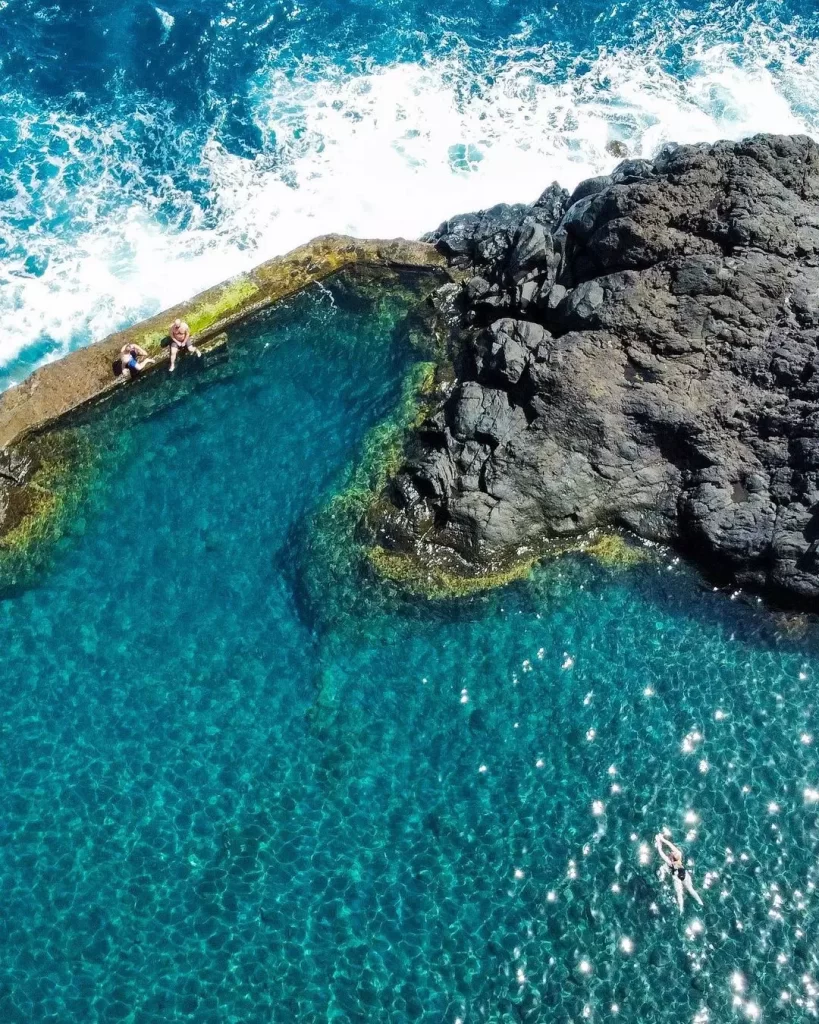
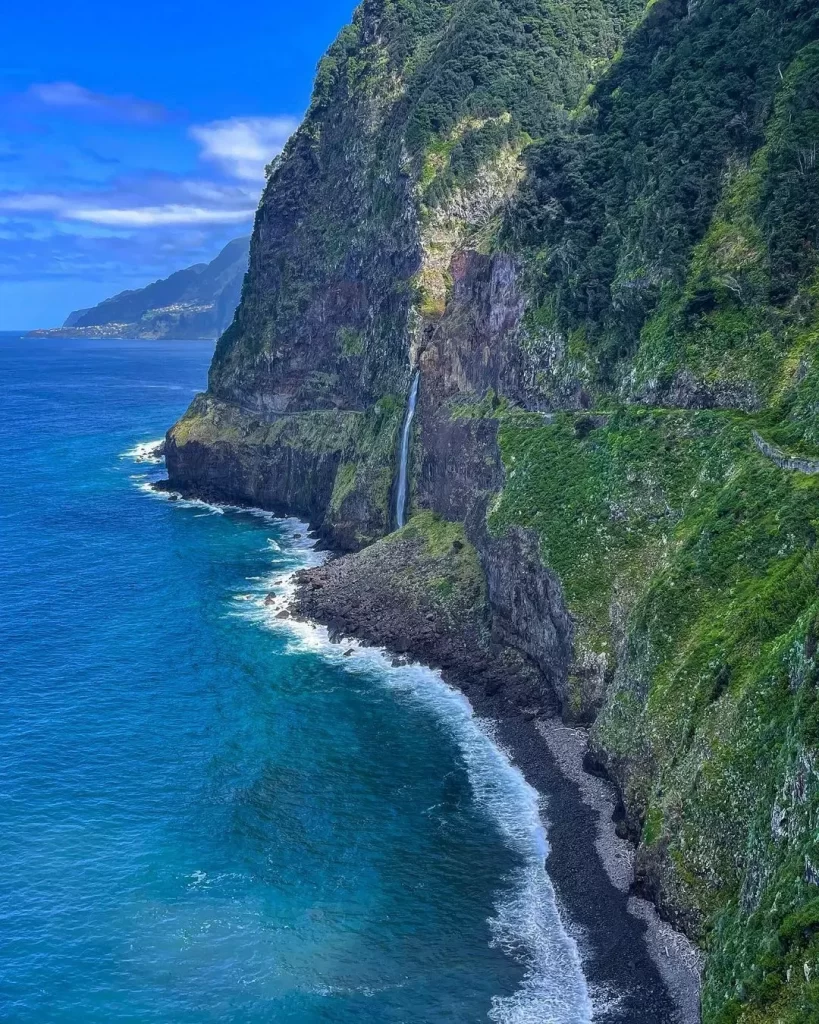
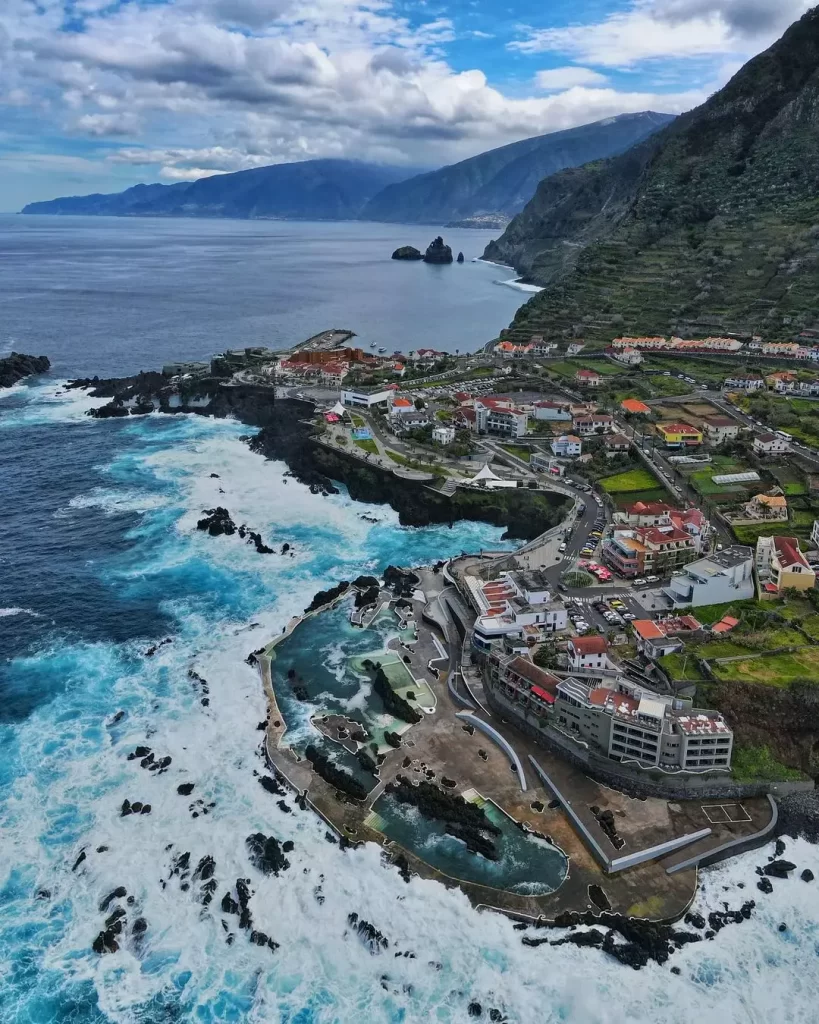
With their natural beauty and peculiar origins, the natural pools of Porto Moniz are an attraction for thousands of national and international tourists alike. In this guide, we will explore what makes these pools so special and what you can expect during your visit.
The natural pools are surrounded by a breathtaking landscape that offers panoramic views of the rugged coastline and cliffs. The water in the pools is of excellent quality and the infrastructure is top-notch, making this beach complex a must-see destination.
Details About the Pools
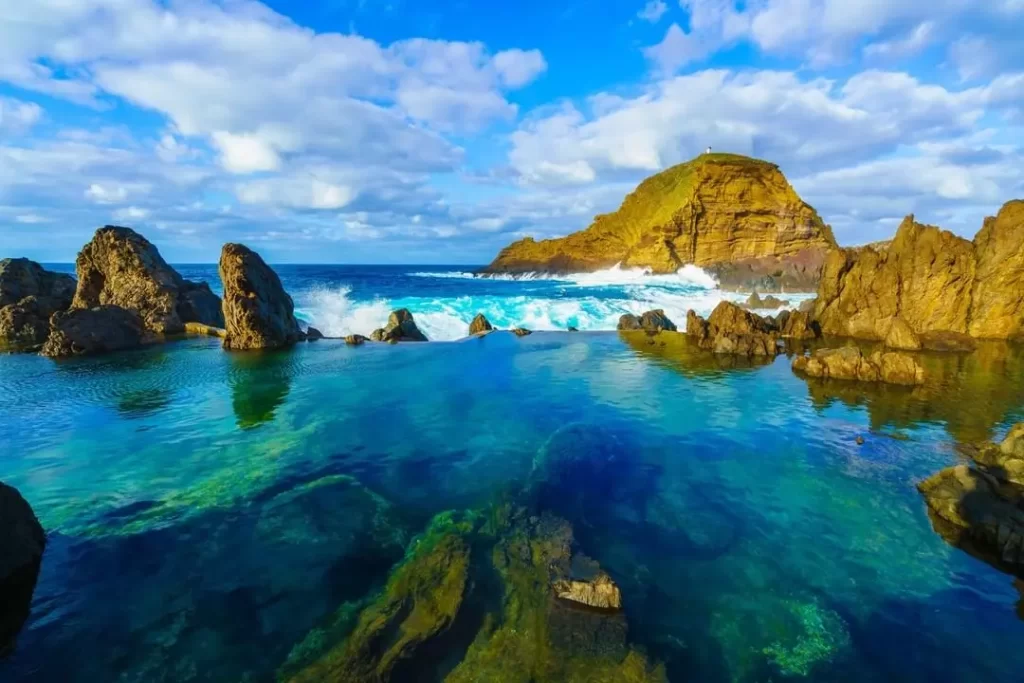
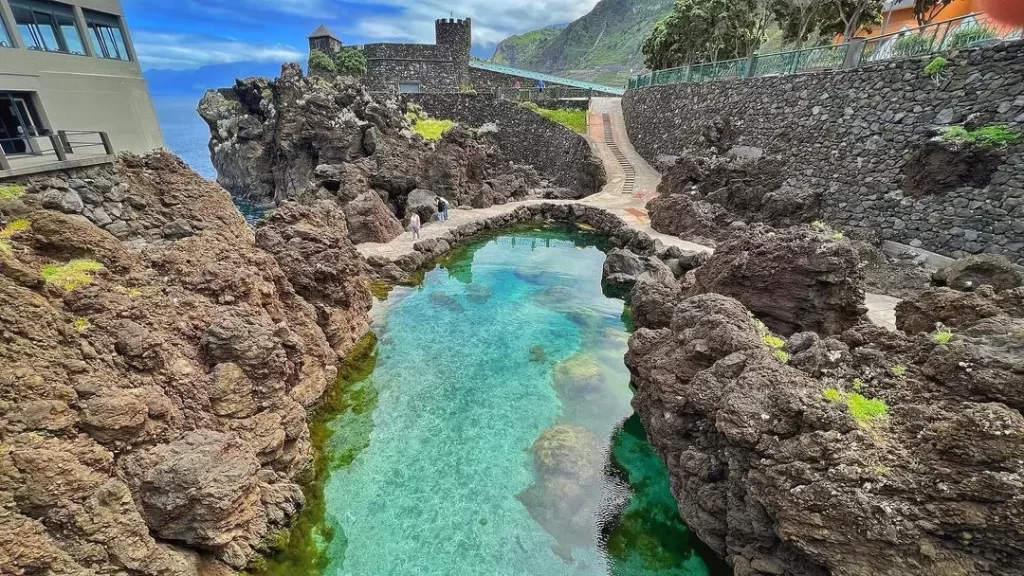
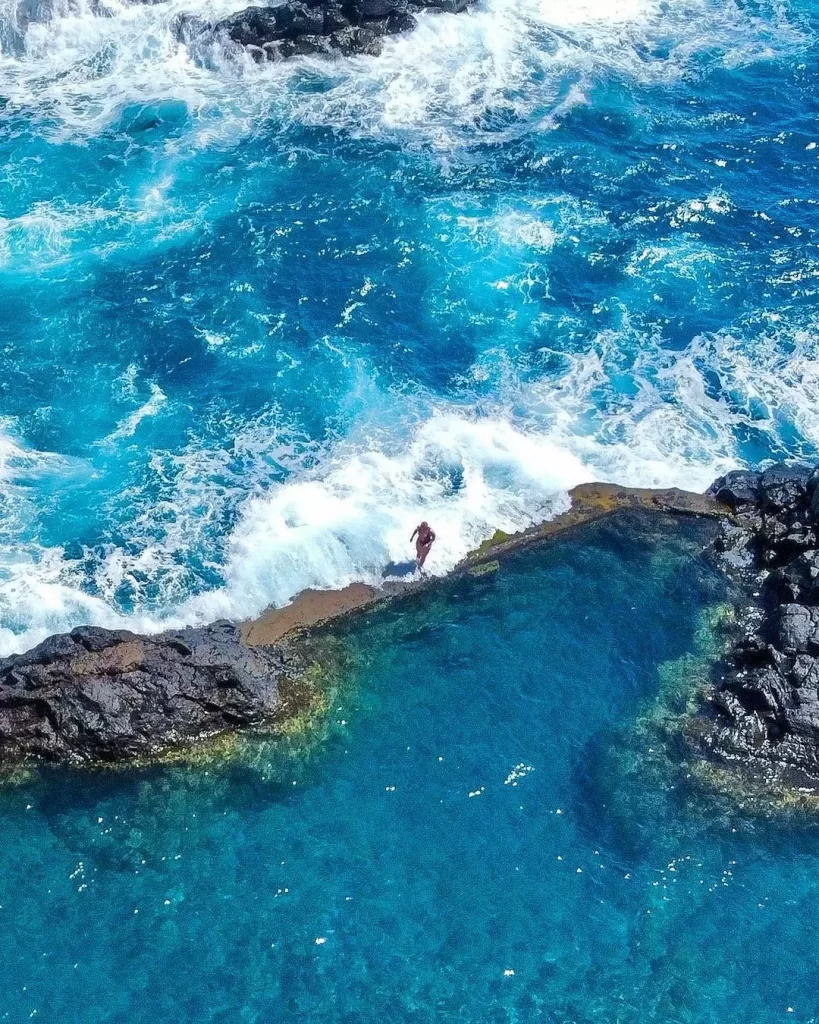
The lounging area is approximately 3217 m2, while the swimming area is 3800 m2 and 2 metres deep, allowing around 7600 m3 of seawater into the pools. The pools are open all year round, with different operating hours depending on the season.
Besides swimming and sunbathing, you will be able to interact with the local marine life, making this a unique experience. The average annual water temperature is between 20 and 21º C, making it comfortable for swimming throughout the year.
The pools also have a bar, changing rooms, a playground, a first aid station, sun loungers, and parasols for hire, and lifeguards on constant duty, ensuring a safe and enjoyable visit.
Admission Fees and Discounts
Entrance to the complex is subject to a year-round fee. The fees are as follows:
- €3 – Citizens over 3 years old, per entry;
- Free – Children aged 3 and under;
- €0.50 – Citizens with a Municipality Card with the SX, RJ, RB, PM, and AC series, per entry;
- €1.50 – Citizens with a student card, or card 65, per entry;
- Free – Citizens with a disability card with a degree equal to or greater than 60%.
To redeem a discount, one of the following cards must be presented: Senior, Student, or Handicap.
Aquarium Natural Swimming Pools
First up, we have the Aquarium Natural Swimming Pools in Porto Moniz. These volcanic pools are a popular attraction and located close to other local sights like the Madeira Aquarium and the Ciência Viva Centre. For a more budget-friendly option, head to the Cachalote natural swimming pools next to the Cachalote restaurant, which are free of charge.
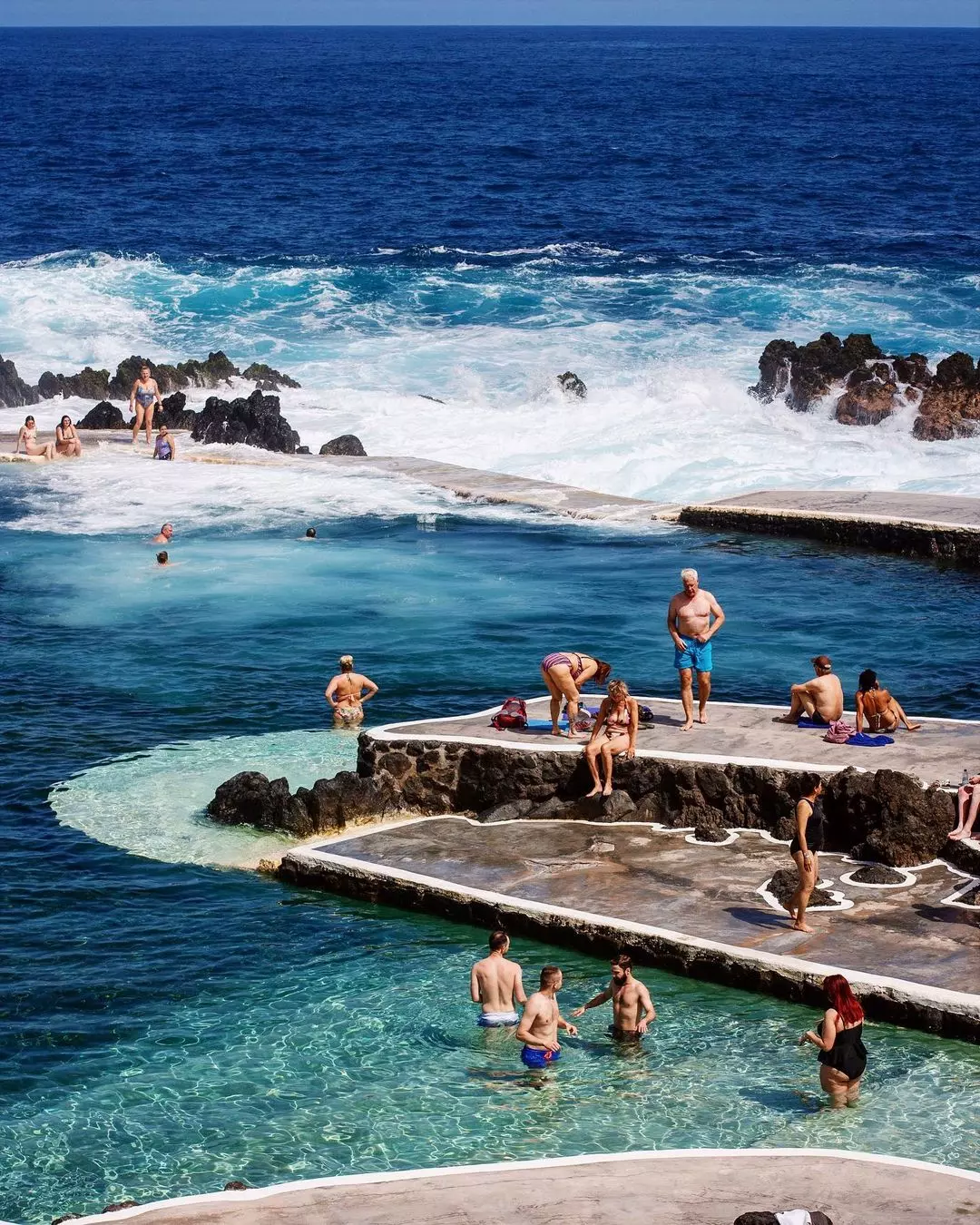
Ribeira da Janela Estuary
Another great spot is the Ribeira da Janela Estuary, located at the mouth of Ribeira da Janela. This bathing area has a solarium, toilets with showers, and access to a nearby freshwater lake and camping site. The beach is accessible all day and provides a relaxing atmosphere for visitors.
Abrigo do Seixal Beach
If you’re in the mood for a black sand beach, head to Porto de Abrigo do Seixal Beach. This beach boasts excellent water quality and offers beautiful views of the north coast. You can also access the Clube Naval do Seixal bar and use kayaks here. Toilets and shower facilities are also available free of charge.
Poças das Lesmas Beach
Finally, there’s the stunning Poças das Lesmas Beach. These natural pools, formed by volcanic rocks, are a true paradise on earth. The crystal-clear waters and vivid colors of the surrounding mountains make for an incredible scene. This peaceful and sheltered beach also has a bar, toilets, and showers, and access is free of charge.
Calhau das Achadas da Cruz
Last but not least, check out Calhau das Achadas da Cruz, located at the base of a steep cliff. This small fajã is accessible by a newly developed footpath and offers a tranquil spot for swimming or strolling along the promenade. You can even spot part of a yacht that ran aground in this area back in 1909.
São Vicente
Located on the north coast of Madeira island, Portugal, São Vicente is a destination full of natural wonders that must be explored by any nature lover. The municipality is home to a vast area of Laurissilva forest, which is the most precious natural treasure of the archipelago. The diversity of flora and fauna, along with its state of preservation, makes São Vicente one of the most privileged places to be in close contact with Madeiran nature through multiple walking paths, with the ocean as a backdrop.
The municipality of São Vicente is a must-visit destination for nature enthusiasts who want to explore the diverse flora and fauna of the Laurissilva forest, the most precious natural treasure of the Madeira archipelago.
The lush green landscapes of São Vicente are a result of volcanic forces and erosion. Visitors can explore the famous volcanic caves formed 890,000 years ago and witness the deep connection of the region to faith through the peculiar chapel of São Vicente, built inside a basalt rock by the sea.
The municipality of São Vicente is home to about 6,000 residents spread across three parishes: Boaventura, Ponta Delgada, and São Vicente. The area spans about 78.70 km², with abundant forests dominating the landscape.
Laurissilva Forest
The highlight of São Vicente is the Laurissilva forest, a subtropical humid forest covering around 15,000 hectares or 20% of the island. This forest is primarily composed of endemic species from the Macaronesia, including many centenarian trees from the Lauraceae family. Visitors can explore the forest’s many hiking trails and experience the vibrant energy of this living fossil.
Praia de São Vicente
Surfers flock to the Praia de São Vicente on the north coast of the island, which boasts excellent conditions for surfing and bodyboarding due to the lively sea. A complex balneary provides infrastructure and support for water sports enthusiasts. Visitors can enjoy a 620-meter-long promenade that connects to Varadouro da Baía dos Juncos, which have the most popular spot among the surfers’ community in São Vicente. The beach also serves as an excellent destination for swimmers and sunbathers.
The municipality of São Vicente is also home to emblematic volcanic caves, historical monuments, and the picturesque chapel of São Vicente or Calhau. With its vast natural and cultural heritage, São Vicente offers visitors a truly unique experience of Madeira’s natural beauty.Top of Form
Fanal Foreste
This UNESCO World Heritage Site is a must-see for anyone visiting Madeira, the Azores, or the Canary Islands. But did you know that this forest is more than just a beautiful place to visit? It plays a crucial role in the hydrological balance of Madeira Island.
But don’t worry, thanks to its protected status, Fanal Forest will remain pristine for many years to come, and you can still experience its magic for yourself. One of the best ways to do so is by booking a tour. By doing so, you’ll get to experience the forest’s wonders with a certified guide, and with hotel pick-up and drop-off included, it’s never been easier to explore this unique destination.
But that’s not all – the Rabaçcal area around Fanal is also famous for its incredible levada walks. Vereda do Fanal is a particular highlight, where you can admire even more of the stunning Laurisilva forest. And don’t miss the chance to see some of the most beautiful waterfalls in Madeira on Levada dos Cedros and Levada das 25 Fontes.
So what are you waiting for? Book your Fanal Forest tour now and get ready for an unforgettable adventure. With cancellation up to 24 hours in advance, you can rest assured that your plans are flexible. Make the most of your visit to this ecological wonder and see for yourself why Fanal Forest is truly magical.



